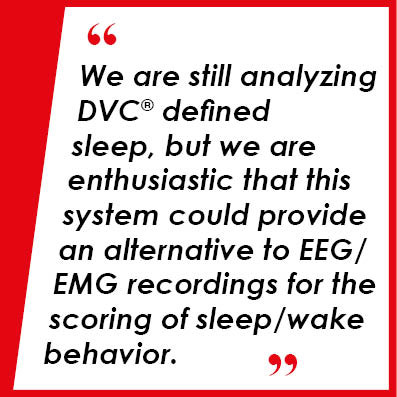
The current version of the Tecniplast website doesn't match your region. Please visit your local website to find information and offerings specific to your country.

The current version of the Tecniplast website doesn't match your region. Please visit your local website to find information and offerings specific to your country.

A discussion on DVC® System for Circadian and Sleep Phenotyping

Selma Tir, PhD/DPhil Candidate in Clinical Neurosciences Nuffield Department of Clinical Neurosciences, University of Oxford, is the author of an important poster presented last May at the Society for Research on Biological Rhythms (SRBR) conference.
Dear Selma, can your summarize your recent poster entitled “Validation of the Digital Ventilated Cage system for Circadian and Sleep Phenotyping”?
Circadian rhythms are internally generated 24-hour cycles of physiological and behavior changes that occur in all living things. They influence our sleep-wake cycles, eating habits and hormone release amongst other things, and disruptions of the circadian clock can contribute to increased risks of metabolic disease, obesity, depression and even cancer. The study of circadian rhythms and their disruption critically depend upon the study of mouse home cage behavior. We thus investigated whether the DVC® System could effectively record locomotor activity under various light-dark cycles used to study circadian rhythms, and whether extended immobility records could be used to infer sleep.
DVC® has been the tool to conduct the study and collect such important data. Can you comment on it?
The DVC® System is based upon widely used individually ventilated cages placed in a rack that continuously records home cage activity. Clear, red and black IVCs equipped with individual LED systems can then be used to entrain animals to the room light cycle or individual cycles in every cage. For example, the black cages are especially useful for the study of jet lag. This system thus provides a great alternative to the use of light-tight chambers (LTCs or 'coffins') which are routinely used in circadian and sleep research. Moreover, the availability of data in real time and on a user-friendly server makes data collection much easier!

Are final data of the study aligned with the expected results?
Home cage activity data show that the DVC® System provides sufficient sensitivity to detect changes in circadian rhythms and that animals can entrain to various light-dark cycles using the Leddy system in the black cages.
We are still analyzing DVC® defined sleep, but are enthusiastic that this system could provide an alternative to EEG/EMG recordings for the scoring of sleep/wake behavior.
Can you comment on the DVC® technology and tell us your vision of DVC® in the lab animal industry in the short term?
Preliminary data suggest that black IVCs with independent Leddy lighting provide an ideal alternative to LTCs for circadian phenotyping, and that this would allow the simultaneous analysis of up to 60 mice in a DVC® rack. Based on 6-12 mice per LTC, this is equivalent to 5-10 traditional LTCs in a much smaller footprint and with the improved biosecurity of an IVC. It thus has great potential for the facilitation of circadian studies.
GIORGIO ROSATI
SENIOR PRODUCT MANAGER DIGILAB TECNIPLAST S.P.A.